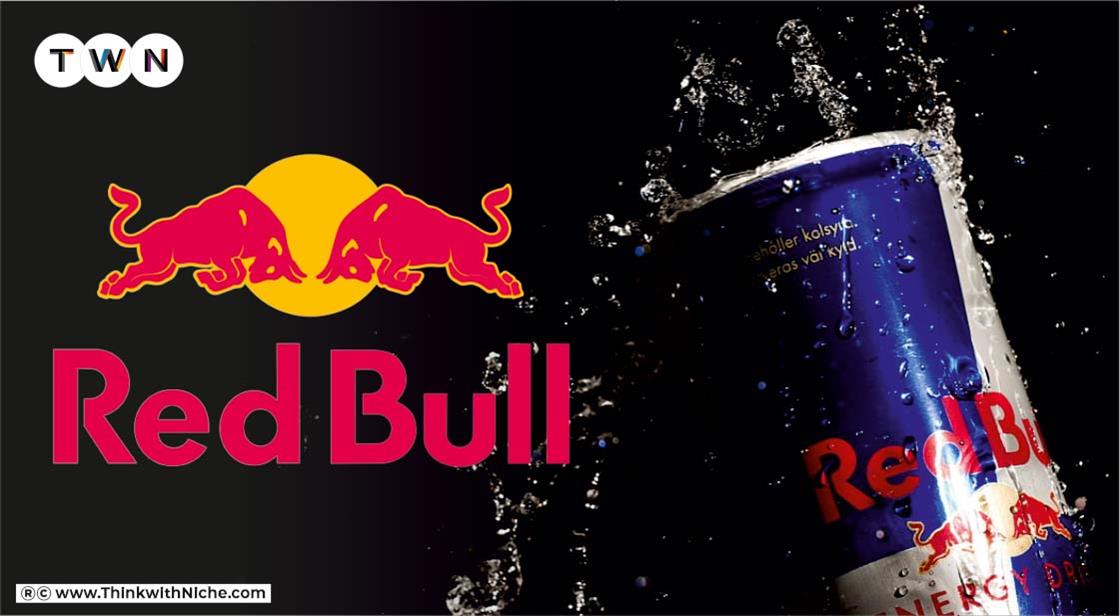
When you hear the word "wings," you already know what we're talking about. Red Bull is more than just another energy drink to enjoy on a hot summer day. Every person who leads an active lifestyle experiences this emotion. Red Bull is an energy drink produced by the Austrian company Red Bull GmbH. Red Bull GmbH is known for supporting a variety of sports teams and events. You've probably seen their logo on a Formula One car. This article will delve a little deeper into Red Bull's marketing strategy for gaining maximum consumer attention.
To know about Red Bull GmbH, click here!
The Marketing Strategy of Red Bull – An Examination of Their Campaign
Red Bull is an Austrian beverage company known for its creative marketing strategies and campaigns. The company is a marketing powerhouse known for both its main products and its daring and widespread campaigns. With a market share of more than 40%, Red Bull, the company that invented the energy drink industry, continues to be the market leader. The audience is always at the forefront of Red Bull's marketing efforts, followed by product sales.
Red Bull had a 24.9 percent share of the US energy drink market in 2019, with over 7.5 billion cans sold worldwide. Between 2020 and 2025, this number is expected to increase by 7%. They are able to achieve these figures because they produce content on par with major publishers and stage mind-blowing events, making them one of the most talked-about brands on the planet. Red Bull uses a variety of social media platforms and channels to create content that gives people the experience they're looking for.
Red Bull has created a brand identity and raised awareness through extreme sports event series or campaigns such as the Red Bull Cliff Diving World Series, Red Bull Air Race, Red Bull Crashed Ice, and stunts such as the Stratos space diving project, rather than taking a traditional approach to mass marketing.
Scuderia Alphatauri and Red Bull Racing are two Formula One teams owned by the company, as are FC Red Bull Salzburg and the New York Red Bulls. Its record label, Red Bull Records, has a slew of celebrity endorsements.Let's take a look at how Red Bull came up with a marketing strategy that propelled them to the top of the energy drink market.
The Target Audience of the Red Bull for Advertisement
To understand the company's marketing strategy and campaigns, one must first understand the company's target audience, its critical role, and how it is reached. Red Bull's target audience, according to Numerator, is primarily male and female between the ages of 18 and 34, with an average to high income who enjoy sports, extreme sports, and athletic events. Their clients are young, self-sufficient professionals with lofty ambitions.
Customer surveys, field trials, and focus groups are also used to collect relevant data, and the company keeps its buyer profile up to date. It ensures that their strategies remain current and effective at all times. Red Bull uses three major strategies to attract its target audience:
· Publishing high-quality content created by the marketing team in a variety of media outlets where their target audience spends time.
· Red Bull uses large-scale publicity stunts to grab the attention of its target audience and spread the company's or product's message.
· Red Bull's sponsorship and creation of events in various countries is one of its most important strategies for attracting its young audience.
Red Bull and Its Marketing Strategy
Red Bull owns more than 70% of the $1.6 billion market capitalization and attributes its success to aggressive, unconventional marketing strategies. The company's marketing strategy is based on promoting a high-energy philosophy for its customers' lives; rather than selling a product, it promotes a way of life through its advertisements and campaigns. Red Bull also caters to a younger demographic, including millennials, Gen Y, and Gen Z. They know what their target market wants and incorporate it into their marketing strategy.
Tags:
red bull gives you wings, Red Bull Marketing Strategy, Red Bull Marketing
Read This Full ARTICLE, Click Here

Comments
Post a Comment